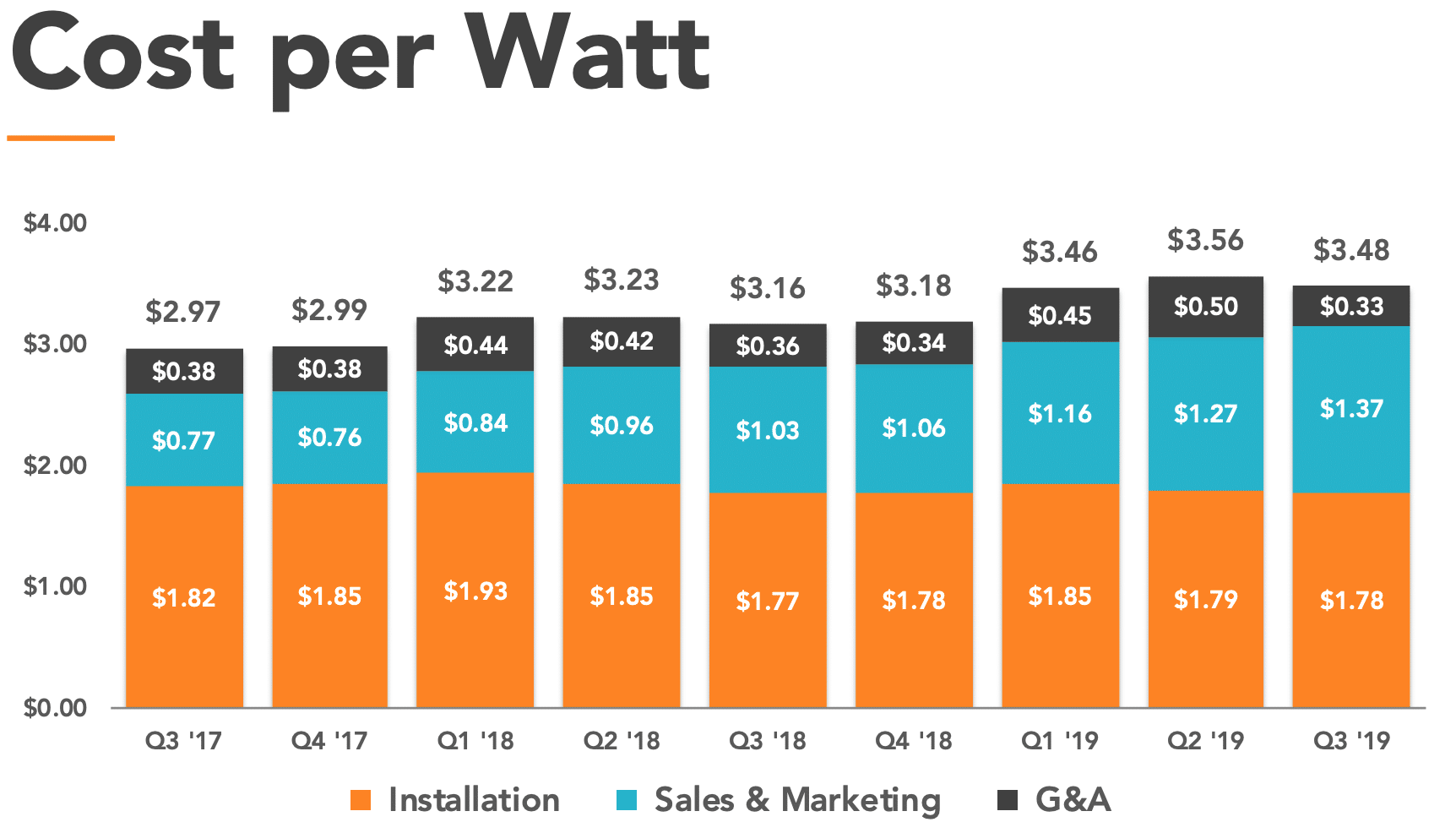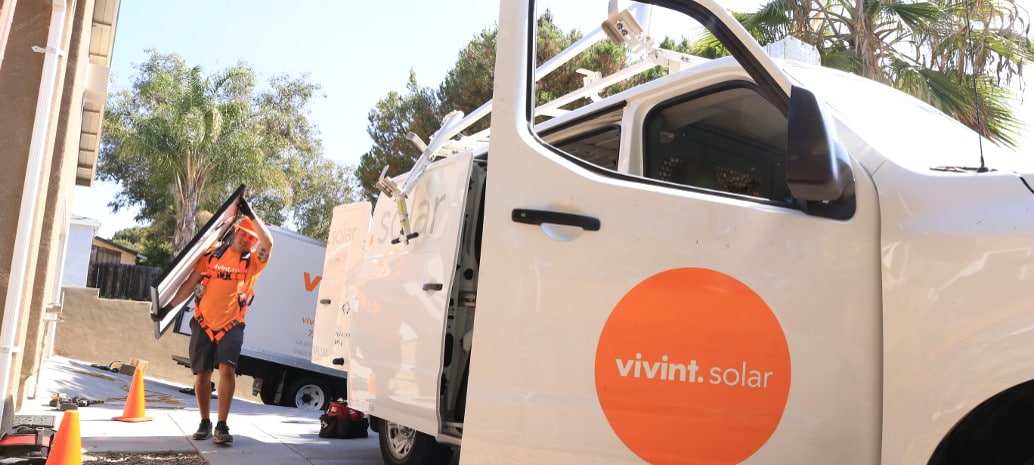In the world of third-party solar companies, cash is easy to come by, but it’s just as easy to lose. This has been a chronic issue plaguing the industry’s major players, namely Vivint and Sunrun.
Because of this, determining success in quarterly results is a tricky beast. Every accomplishment Vivint makes still feels the breath of operating costs and losses breathing down its neck. That being said, the company had a historic quarter in the installation sense, installing 65 MW. That figure is more than any other quarter in almost half a decade and 9 MW more than he 56 MW installed in Q2. Vivint has now installed just over 1.2 GWdc of residential solar.
After cash comes into question, the results are a touch trickier. The company’s $104 million in revenue is not only an impressive 33% growth year-over-year, but smashes the quarterly record of $91 million, set in Q2 of this year. However, Vivint also reported a $44 million loss from operations, which appears yet again to be due to ballooning sales and general and administrative (G&A) costs. When looking at the company’s cost-per-watt, these issues become even clearer.

While the total cost-per-watt dropped substantially from Q2, with installation falling 1¢/watt and G&A costs taking an impressive dive to 33¢/watt, lower than they have ever been in the past two years. This comes with the news, however, that sales and marketing costs are continuing to rise, which is no surprise, considering that has been the case every quarter since late 2017. During the company’s quarterly results call, a Vivint representative shared that the company expects customer acquisition costs to fall as market matures, though no timetable was given as to when that time will come. For Q4 the company expects a per-watt cost between $3.46 and $3.54, so either a further improvement or a return to cost increases.
Before the end of the informational session of the call, Vivint CEO David Bywater quickly shared that the company has doubled storage installations sequentially since Q2, with more growth anticipated for that market.
Like its competitors Sunrun and SunPower, Vivint is positioning itself in advance of the impending ITC step-down (a phrase which seems to come up 100 times a day). The company has safe harbored 115 MW of panels so far, which is expected to last midway through 2020, though it was shared that the company does not plan to safe harbor any more capacity.
Vivint’s Q4 results are set to be interesting. Outside of the updated cost-per-watt, the company is likely to hit 1.3 GW of installed solar capacity. The quarter will also bring meaningful future projections, as it will be the last quarter before the California rooftop solar mandate kicks in. Last quarter, Bywater shared that the company was working with eight of the top 10 homebuilders in California and it has now been a year since the unveiling of a new fixed-rate lease product specifically for the new home market.
This content is protected by copyright and may not be reused. If you want to cooperate with us and would like to reuse some of our content, please contact: editors@pv-magazine.com.









By submitting this form you agree to pv magazine using your data for the purposes of publishing your comment.
Your personal data will only be disclosed or otherwise transmitted to third parties for the purposes of spam filtering or if this is necessary for technical maintenance of the website. Any other transfer to third parties will not take place unless this is justified on the basis of applicable data protection regulations or if pv magazine is legally obliged to do so.
You may revoke this consent at any time with effect for the future, in which case your personal data will be deleted immediately. Otherwise, your data will be deleted if pv magazine has processed your request or the purpose of data storage is fulfilled.
Further information on data privacy can be found in our Data Protection Policy.